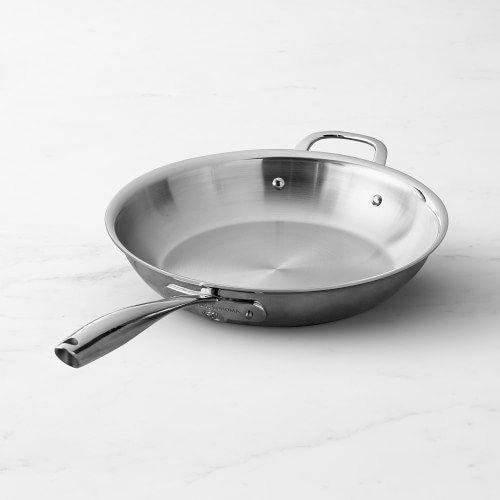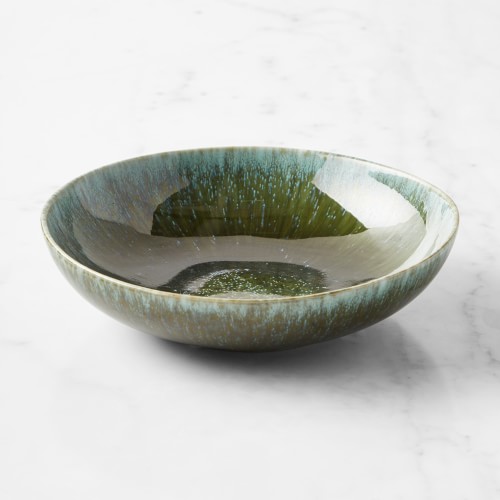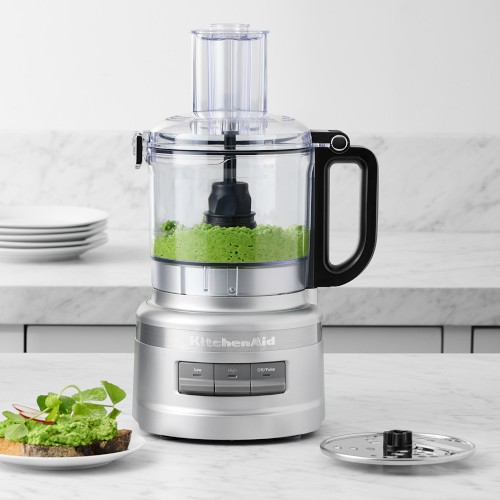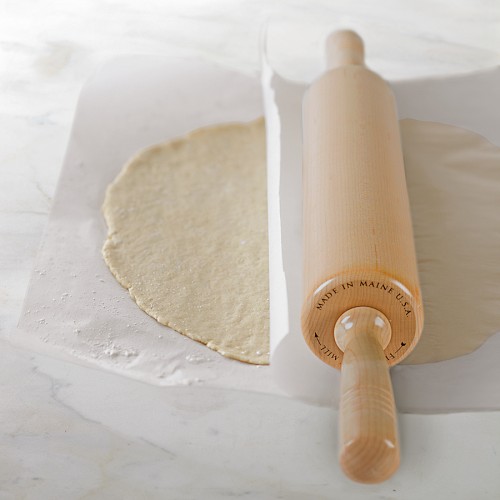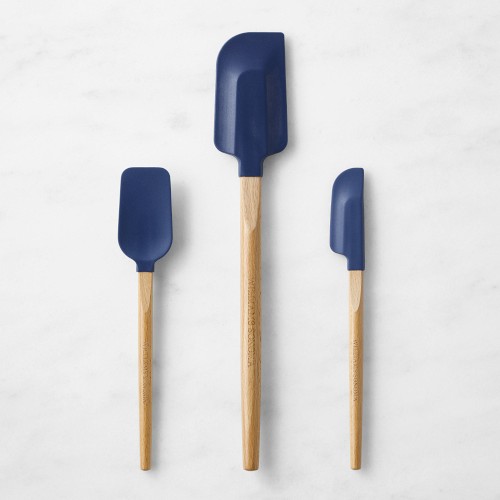
Fresh Spinach Pasta
Baby spinach adds chewiness and fresh vegetal flavor to this updated version of a classic egg pasta dough. Our Test Kitchen chefs love tossing this nutrient-rich fresh pasta with lemon, Parmesan and dried breadcrumbs, but it also pairs well with a simple herb-drawer pesto.
Ingredients:
- 10 oz. (315 g) fresh baby spinach
- 3 cups (12 3/4 oz./360 g) unbleached all-purpose flour
- 3 large eggs, plus 1 egg yolk
- 1 Tbs. olive oil
- Kosher salt
- Semolina flour for dusting
Directions:
Rinse the spinach well, drain briefly and place the damp spinach in a large fry pan. Cover and cook over medium heat until the spinach wilts, 2 to 3 minutes. Drain in a sieve under cold water to stop the spinach from cooking further. Place the cooled spinach on a cloth. Roll up the cloth and over a sink or bowl, twist and squeeze the cloth, releasing any excess liquid from the spinach. Continue squeezing until the spinach is thoroughly dry.
Place the spinach in a food processor with 1 of the eggs. Process to a smooth puree, stopping once or twice to scrape down the sides of the work bowl. Set aside.
Place the all-purpose flour in a mound on a work surface. Make a wide well in the center of the mound, large enough to hold the spinach mixture and the remaining eggs. Place the eggs, spinach, oil and 1 ¼ tsp. salt in the well. Using a fork, lightly beat together the eggs, spinach and oil until combined. While lightly beating, gradually incorporate some of the flour from the sides, taking care not to break the flour wall. When the egg is no longer runny, you can stop worrying about the wall. Continue working in more flour until the dough is no longer wet, using your hands or a bench scraper if necessary.
Begin kneading the dough by hand until the dough is smooth and no longer sticky, making sure to incorporate all the flour until hydrated, 2 to 3 minutes. Wrap the dough in plastic wrap and refrigerate for 1 hour. Meanwhile, dust 2 baking sheets with semolina flour and set aside.
Remove the dough from the refrigerator and using a bench scraper or knife, divide the dough in half. Keep one half on the work surface, covered with a kitchen towel to prevent it from drying.
If rolling the pasta dough out by hand, using a rolling pin, roll to your desired thinness and cut as desired. Place the cut pasta noodles/shapes back onto the baking sheet. Repeat with the second half of the dough.
If using a pasta machine, set up your pasta machine alongside another work surface. Lightly flour the work surface with some of the reserved flour. Using a rolling pin, flatten the other dough half into a rectangle thin enough to go through the rollers at the widest setting. Pass the dough through the rollers once, then lay the resulting ribbon down on the work surface and flour it lightly. Fold into thirds lengthwise to make a rectangle and flour both sides lightly.
Flatten the dough with the rolling pin until it is thin enough to go through the rollers again. With one of the two open edges going first, pass the dough through the rollers nine more times at the widest setting; after each time, flour, fold and flatten the dough as described. After ten trips through the wide rollers, the dough should be completely smooth and supple.
Now you are ready to thin the dough. Starting at the second-to-widest setting, pass the dough through the rollers repeatedly, setting the rollers one notch narrower each time. When the pasta ribbon gets unwieldy, cut it in half and continue rolling one part at a time until the dough reaches the desired thinness.
Arrange the finished pasta sheets on the prepared baking sheets and cover with kitchen towels to prevent drying. Repeat the entire process with the second half of the dough. Cut the pasta by hand or machine as desired.
At this point, you can dry out your pasta overnight, if desired, and store in a plastic bag in the fridge for up to 3 days, or store in the freezer for up to 1 month.
When ready to cook: Bring a large pot of heavily salted water to a boil. Quickly add the pasta and using tongs, give the pasta a stir to keep it from initially sticking together. Cook the pasta until al dente, tasting the noodle as you go to ensure it’s done; about 2 to 4 minutes if fresh, about 4 to 5 minutes if frozen, depending on the shape and size. Makes 1 1/2 lb. (24. oz./750 g) pasta.
Adapted by the Williams Sonoma Test Kitchen from Classic Pasta at Home. Copyright © 1998 by Janet Fletcher. Published by Time-Life Books, Williams-Sonoma Lifestyles Series.














